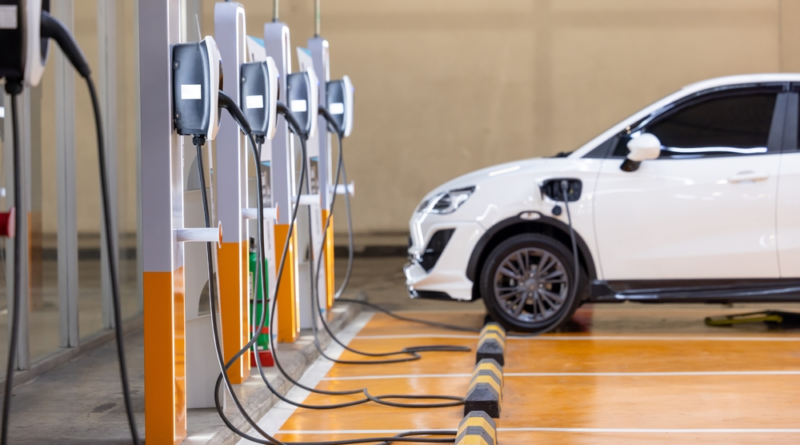Electric Vehicle Trends: Shaping the Future of Transportation
In recent years, electric vehicles (EVs) have surged in popularity, marking a significant shift in the automotive industry. This transformation is driven by advancements in technology, growing environmental concerns, and robust government policies aimed at reducing carbon emissions. This article explores the latest trends in electric vehicles, highlighting the innovations and challenges shaping the future of transportation.

1. Technological Advancements
1.1 Battery Technology
One of the most critical aspects of EVs is battery technology. The development of lithium-ion batteries has revolutionized the industry by providing higher energy densities, longer lifespans, and faster charging times. Companies like Tesla, Panasonic, and LG Chem are leading the charge, investing heavily in research and development to further improve battery performance and reduce costs.
1.2 Solid-State Batteries
Solid-state batteries are emerging as the next big thing in EV technology. Unlike traditional lithium-ion batteries, solid-state batteries use a solid electrolyte, which can offer higher energy density, improved safety, and faster charging times. Toyota and QuantumScape are among the pioneers in this field, aiming to commercialize solid-state batteries in the near future.
1.3 Charging Infrastructure
The expansion of charging infrastructure is crucial for the widespread adoption of EVs. Companies and governments are investing in the development of fast-charging networks to alleviate range anxiety among potential EV buyers. Tesla’s Supercharger network, Electrify America, and ChargePoint are expanding their reach, making it easier for EV owners to find charging stations.
2. Market Growth and Consumer Adoption
2.1 Global Sales Surge
Global sales of electric vehicles have been on a steady rise. According to the International Energy Agency (IEA), electric car sales exceeded 10 million in 2022, representing a 43% increase from the previous year. This growth is driven by strong demand in key markets such as China, Europe, and the United States.
2.2 Consumer Awareness
Increased consumer awareness about the environmental benefits of EVs and the cost savings associated with lower fuel and maintenance costs are significant factors driving adoption. Governments are also offering incentives such as tax credits, rebates, and subsidies to encourage consumers to make the switch to electric vehicles.
3. Government Policies and Regulations
3.1 Emission Standards
Governments worldwide are implementing stricter emission standards to combat climate change. The European Union’s CO2 emission targets and California’s Zero Emission Vehicle (ZEV) program are prime examples of policies driving the shift towards electric mobility.
3.2 Incentives and Subsidies
Financial incentives play a crucial role in promoting EV adoption. Countries like Norway offer substantial tax exemptions, making EVs more affordable than their internal combustion engine counterparts. In the United States, the federal government provides tax credits of up to $7,500 for EV purchases, with additional incentives available at the state level.
3.3 Infrastructure Investment
Governments are also investing in charging infrastructure to support the growing number of EVs on the road. The Biden administration’s infrastructure plan includes $7.5 billion for EV charging stations, aiming to build a network of 500,000 chargers by 2030.
4. Autonomous Driving and Connectivity
4.1 Autonomous Vehicles
The integration of autonomous driving technology with electric vehicles is a trend to watch. Companies like Tesla, Waymo, and Cruise are developing self-driving electric cars, which could revolutionize transportation by improving safety and efficiency.
4.2 Vehicle-to-Everything (V2X) Communication
Vehicle-to-everything (V2X) communication technology allows EVs to communicate with each other, infrastructure, and even pedestrians. This technology can enhance traffic management, reduce accidents, and improve energy efficiency by enabling smarter routing and charging decisions.
5. Challenges and Solutions
5.1 Range Anxiety
Range anxiety remains one of the biggest challenges for EV adoption. However, advancements in battery technology and the expansion of charging infrastructure are mitigating this concern. The latest EV models offer ranges exceeding 300 miles on a single charge, comparable to traditional gasoline vehicles.
5.2 Charging Speed
While charging infrastructure is expanding, the time required to charge an EV is still longer compared to refueling a gasoline car. Ultra-fast chargers, capable of delivering 300 miles of range in under 20 minutes, are being developed to address this issue.
5.3 Battery Recycling and Sustainability
The environmental impact of battery production and disposal is a growing concern. Companies are developing recycling technologies to recover valuable materials from used batteries, reducing the need for new raw materials and minimizing environmental impact.
6. The Future of Electric Vehicles
6.1 Electric Mobility as a Service (eMaaS)
Electric Mobility as a Service (eMaaS) is an emerging trend that combines electric vehicles with ride-sharing and car-sharing services. Companies like Uber and Lyft are investing in electric fleets to offer sustainable transportation options.
6.2 Integration with Renewable Energy
Integrating EVs with renewable energy sources, such as solar and wind power, can further reduce carbon emissions. Homeowners with solar panels can charge their EVs using clean energy, contributing to a sustainable energy ecosystem.
6.3 Advancements in Autonomous Technology
The future of transportation lies in the convergence of electric and autonomous technologies. Self-driving electric vehicles can enhance mobility for individuals who cannot drive, reduce traffic congestion, and improve road safety.
6.4 Electric Aviation and Maritime
The electrification of aviation and maritime sectors is another exciting development. Companies are developing electric airplanes and ships to reduce the carbon footprint of these industries. Electric vertical takeoff and landing (eVTOL) aircraft, like those being developed by Joby Aviation and Lilium, have the potential to revolutionize urban transportation.
Conclusion
The trends in electric vehicles indicate a promising future for sustainable transportation. Technological advancements, supportive government policies, and increasing consumer awareness are driving the rapid adoption of EVs. While challenges remain, ongoing innovations in battery technology, charging infrastructure, and autonomous driving are paving the way for a cleaner, greener, and more efficient transportation system. As the world moves towards a low-carbon future, electric vehicles will play a crucial role in shaping the future of mobility.
……….END……….
